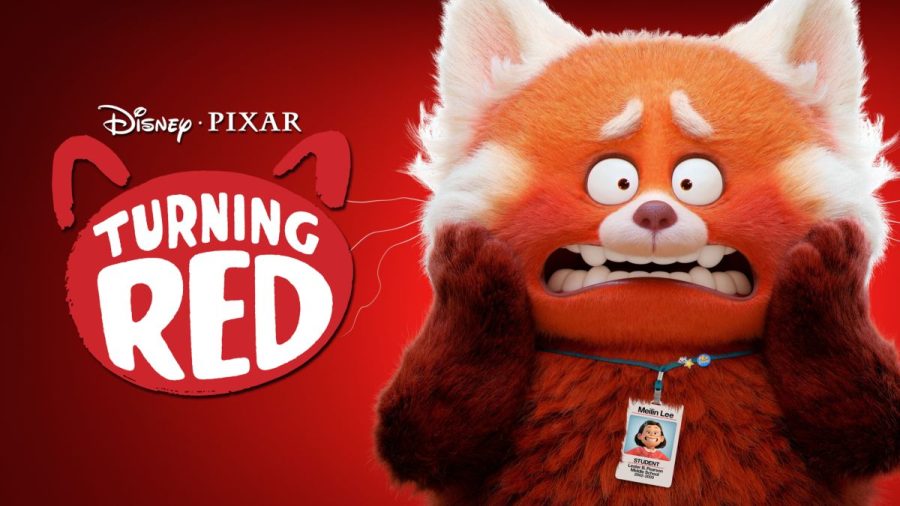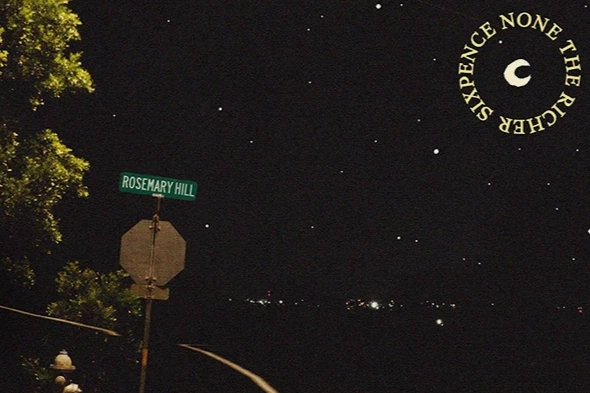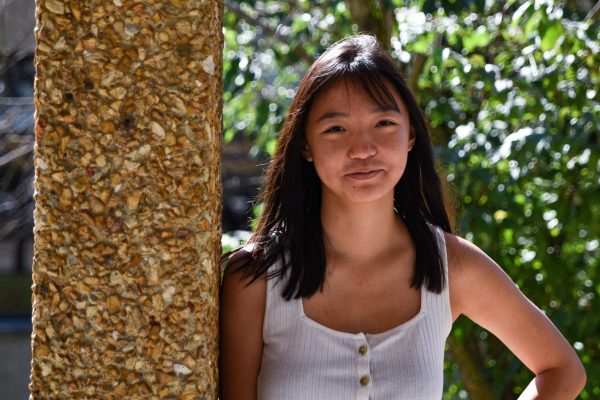To be honest, I went into “Turning Red” with low expectations. I had seen reviews on social media accusing the producers of pandering, or panda-ring, to Asians, and movies on Disney Plus have disappointed me before — looking at you, Mulan. While “Crazy Rich Asians” may have seemed revolutionary to me, “Turning Red” comes after a new trend of Asian characters in Hollywood, so just having an Asian lead does not equal authentic representation. However, I was pleasantly surprised.
The film springs to a start with Meilin Lee, a 13-year-old Chinese-Canadian girl living in Toronto. Her confident persona, combined with a rather unfortunate attempt at a cartwheel, makes her character instantly endearing. As she marches into school, we are blessed with a superhero-esque introduction for each of her three friends — one of whom is armed with a lovely Twilight parody novel.
After a long day of school and working at her family temple with her mom, Ming Lee, Meilin sits down to do homework but soon becomes distracted, drawing herself in the extremely muscular arms of Devon, a cashier at Daisy Mart. When Ming finds out, she drags Meilin to Daisy Mart and slams her masterful artwork down in front of Devon, threatening him for corrupting her sweet, perfect daughter.
The second-hand embarrassment from this scene is only paralleled by its relatability. As a high school student, I understand the burden of parent expectations of perfection. We constantly ask ourselves: will I ever be good enough? When parents like Ming live vicariously through their children, putting all their hopes and expectations on them, this pressure worsens. Throughout the film, Meilin agonizes under the words of generations of guilt-tripping parents, reminding herself of their sacrifice for her future and wellbeing. My parents have done so much for me – what if I disappoint them now?
Although the trope of the overbearing parent has been long-used in films like “Finding Nemo” and “Encanto,” the animation in “Turning Red” brings it to life. Each time Meilin’s face crumbles in dismay, I wince with her. However, since my mom reads my articles, I would like to add that she is certainly never overbearing or intrusive! So, take that as you will.Â
After the Daisy Mart disaster, Meilin goes to bed plagued with embarrassment. Then, after a genuinely terrifying nightmare sequence that includes Devon as an objectively disturbing fish-man, the magic happens: Meilin wakes up as a gigantic red panda and promptly locks herself in the bathroom away from her parents. One source of controversy surrounding “Turning Red” occurs when Ming asks whether Meilin’s “red peony bloomed” — in more direct terms if she had her first period. Despite this apparent taboo, the film continues to set Meilin’s metamorphosis as a metaphor for puberty. As Meilin’s body becomes unrecognizable overnight, she becomes moody and begins fighting with her mother. She grows into more and more of her own person, rather than the perfect clone of her mother she strived to be her whole childhood.
Soon, Meilin realizes that if she stays calm, she can return to her human form — with newly ginger hair — in a poof of pink. Inevitably, Ming finds out about Meilin’s transformation. She tells Meilin about the blessing bestowed upon their ancestor, Sun Yee, that allowed her and her descendants to harness their emotions to turn into red pandas. While her mom expects her to be careful until May 25, when a red moon ceremony can be performed to lock her inner panda away forever, Meilin and her friends instead rebel against their parents’ wishes and hatch a plot raise money for an upcoming boy band concert.Â
As the film continues, “Turning Red” shows increasing nuance in Chinese culture. Unfortunately, all too often, Asian characters fit into the same character archetypes. My first memory of seeing an East Asian character on screen was in the mid-Jessie-spin-off, “Bunk’d,” which, I am ashamed to admit I watched. “Bunk’d” featured Tiffany: a nerdy math-obsessed girl with a crazy tiger mom. Other times, Asians are erased altogether as films are whitewashed. By shoving all Asians into the same little box, these film tropes reinforce the feelings of racial isolation that Asians living in the West have as a minority in diaspora.Â
While Ming can be categorized as a crazy tiger mom, Meilin breaks out of traditional Asian stereotypes as she struggles with American and Chinese identities. She likes boy bands and appreciates her ancestral roots; while these two identities often clash, they are not exclusive. Furthermore, the film’s specific cultural choices, such as setting Meilin’s home in Chinatown, made “Turning Red” so much more meaningful to me as a daughter of Chinese immigrants. For me, the most authentically portrayed cultural element was the food. Although my parents may call my taste whitewashed and Americanized, I highly recommend “Turning Red’s” delicious cured pork, bao and porridge that often grace my dinner table.Â
As the red moon approaches, Meilin becomes increasingly reluctant to let go of her panda. Her transformation has led to her gaining popularity in school with many diehard panda fans while growing into her own, sometimes furry, skin. Soon, Ming’s mother, Wu, arrives with a legion of pampering aunties to help with the ceremony. Here, we get a glimpse into Ming’s relationship with her mom. Before Ming contained her red panda, its spirit was destructive and created a rift between her and her parents, who had once been close. In an argument over Meilin’s father, who Wu did not approve of, Ming scarred her mom and carried this guilt with her into adulthood.Â
When May 25 comes, Meilin chooses herself and her friends by running away in the middle of the ceremony and rushing to the concert, where Four Town — which has five members — performs as angels suspended above a rave of screaming teenagers.Â
In a fit of anger, Ming’s talisman that holds her red panda spirit breaks, and Ming transforms into a Godzilla-sized red panda, wreaking havoc on the city as she makes her way toward her daughter. After keeping all of her rage pent up inside of her, Ming’s panda comes back with a vengeance, demonstrating how unhealthy stifling emotions can be. The fiery mother-daughter dynamic in puberty is relatable, as an increasingly moody teenager clashes with her increasingly irritable mom.Â
Ming largely forgets how her childhood felt and becomes a copy of her controlling mother, furthering the intergenerational trauma that comes with overbearing and critical parents. Her anger and rage towards Meilin, rather than disciplining her and magically turning her into little “Meimei” again, further the strife between the two. Meilin is encouraged to rebel against her mom, and with a swift panda-sized bop to the nose, she knocks her out.Â
Wu and the aunties arrive to complete the ceremony, transporting Mei and her mom into a serene, though nondescript, bamboo forest. Mei discovers a younger version of Ming crying in shame for hurting her mother. But Mei embraces Ming, finally understanding that her mom is not all too different from herself. Ming changes from a monolithic tiger mom to a product of her childhood, and Mei finally tells her mom what she has needed to hear all along: it is okay that you grew apart from your parents. Guided by her daughter, Ming comes to terms with her own teenage mistakes and begins to forgive herself, healing the intergenerational trauma passed down in her family.Â
Ming steps through the portal and undergoes a new transformation of understanding and acceptance while she is separated from her panda spirit. As Mei stands on the other side of the spiritual portal from her mother, choosing to retain her red panda, Ming learns to let her go and allow her daughter to become her person before she loses her in an attempt to hold on.
Puberty is an uncomfortable experience, both physically and emotionally. Admittedly, I was an embarrassing 13-year-old. Not the same flavor of gawk-at-boys-in-school-hallways and squeal-about-boy-bands-on-rooftops embarrassing that Mei Lee is but equally cringe-inducing in my own unique way. As our interests and relationships shift, we grow apart from our parents in an attempt to become, in Meilin’s words, “calm, mature adult[s].” During this volatile process, we make mistakes. We hurt people, often our parents. All too often, we hurt ourselves, with regrettable decisions that haunt us for years. But through this moment between Ming and Meiling, “Turning Red” shows change and forgiving your inner 13-year-old is okay. Making mistakes and growing apart from your parents is part of life.Â





![There are more than 20 open cardio machines at Crunch Fitness. I enjoyed the spacious environment at Crunch, a sentiment that was shared by sophomore Sanjana Daggubati. “[Going to] Crunch Fitness was the right decision because [it] feels more professional. Crunch’s workers are laid back, but not to the point where they don't care,” Daggubati said.](https://pwestpathfinder.com/wp-content/uploads/2025/09/IMG_5242-1-1200x900.jpg)

![Various empty Kit Kat wrappers crowd the desk, surrounded by scoring sheets. While production of Kit Kat flavors in the U.S. is limited, Nestlé, the owner of Kit Kat, manufactures hundreds of unique flavors in Japan, including the flavors ocean salt and passion fruit. “I thought there [were] some interesting flavors, and a lot of them were really unexpected,” senior Elle Levesque said.](https://pwestpathfinder.com/wp-content/uploads/2025/09/image-2.png)


![Pantone’s selection of the 2025 Color of the Year is revealed: Mocha Mousse. Ceramics teacher Ashley Drissell enjoys this year’s selection. “Maybe it’s the name but [Mocha Mousse] reminds me of chocolate and coffee. It makes me hungry. It’s very rich and decadent,” Drissell said.](https://pwestpathfinder.com/wp-content/uploads/2025/02/DSC_0015-1200x800.jpg)



Emily • Apr 8, 2022 at 12:03 pm
Serena- I adore this article. Such a well written review of the movie. Incredible job!